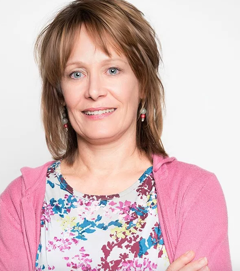Monday
Community ArticlesRight Livelihood Arises from Raising Equestrian Windhorse

Craig teaching at home
by Andrea D’Asaro
Originally published here on the Seattle Shambhala Center Blog
Right livelihood is one of the traditional ethical elements of the Buddhist eightfold path. For Shambhalians who aspire to “create enlightened society” this means sharing our inherent goodness or inner richness through our work. Livelihood can be more than income, but rather our offering, an act of generosity.
Shambhala member Craig Stevens, a master horse trainer and instructor, suggests that training horses and riders is his “service above self.” In his Classical Equitation approach, Craig trains horses (and humans) using an intuitive connection in which rider and horse appear to be melding body and mind in compassionate communication. This style is called “classical dressage,” a formalized riding style emphasizing precision of movement often called a “living work of art.”
Craig brings his path of meditation into his work each day. “In Buddhism, right livelihood provides both individual and universal good with a sense of sacredness. You see that your work is sacred, a feeling that is neither good nor bad, but special.”

Running in NSAE’s pastures in summer: Da Vinci and Bayberry
Known for his eloquent philosophies and Brooklyn accent, Craig practices his art with ten beautiful privately owned horses in dressage training and four school horses that provide lessons for riders who do not have their own. The immaculately clean barn is managed by Craig’s wife and partner, Mary Anne Campbell, who has a life long sadhana practice and also trains and teaches both locally and internationally. They do their work with the support of a great staff and a wonderful international community of students.
I visited him for this article along with senior Shambhala teacher, Shelley Pierce, and my horsewoman mother, Barbara D’Asaro. In his indoor ring, he demonstrated his deep connection with one of his favorite horses, Da Vinci, a lithe, dappled Arabian who pranced and tilted his ears towards his owner. “We have harmony—moving the same direction,” explains Craig, as he trotted his horse on long lunge line in a circle around him. “You play with the stiff area in his body and see where muscles are tight or loose; I match his tight and looseness and he matches mine.”
Making Friends with the Horse
We watch as the horse “gathers” and “listens” to Craig, sidestepping and breaking into a slow, controlled canter, tilting towards his trainer all the while. With barely perceivable gestures, Craig cues DaVinci to back up, dance in place and show the impressive leaping called ‘airs above the ground’.
 “I have control over each of the four feet. It takes a long time to teach humans, but a short time for horses,” says Craig who has regular students who board their horses with him or take weekly lessons, sometimes joining him in meditation practice.
“I have control over each of the four feet. It takes a long time to teach humans, but a short time for horses,” says Craig who has regular students who board their horses with him or take weekly lessons, sometimes joining him in meditation practice.
A member of Shambhala for the past nine years, Craig is nationally known for his National School of Classical Equitation (https://www.classical-equitation.com/home/), which he runs with his wife, equestrian Mary Anne Campbell. “Classical equitation can refer to the Platonic notion of an ideal, a kind of surpassing beauty and transcendent reality that is instantly recognizable as being real. It describes an art form … traced through …an unbroken lineage of masters,” according to the website.
Basic goodness guides the process
 Stevens sees basic goodness in his work every day: “Goodness is the birthright of every horse and every human. The path is found when kindness and gentleness find expression in this very moment. This is your native goodness seeking to express itself in the world.”
Stevens sees basic goodness in his work every day: “Goodness is the birthright of every horse and every human. The path is found when kindness and gentleness find expression in this very moment. This is your native goodness seeking to express itself in the world.”
Horses are very helpful in opening to our inherent goodness, says Craig, because “you get to be the small voice in the horse’s head that says to them, ‘Yes, you are basically good.’”
Craig’s meditation practice guides his bond with his horses, an uncommon approach in the rarified world of dressage. “ You don’t want to disrupt their mind; if you threaten them and evoke their fight or flight response, they won’t move freely for you.”
He suggests that windhorse, the life force energy of inherent wakefulness, “is when horse and rider gather their senses creating energy for movement.” Craig views his unique style of training horses and riders as a “practice for working with our own self- created demons.” Although his riding students sometimes miss the connection to meditation, they begin to carry a synergy into other parts of their lives, says Craig.
“People pay me to be a riding instructor but I’m teaching them how to take charge of their own mind and body.”
photos by Linnea Falk, Christie Fisher, Mary Anne Campbell, and Anneli Eriksson; Provided by Mary Anne Campbell
 Andrea D’Asaro is a long-term Shambhala meditator and teaches mindfulness in Seattle schools and colleges. She enjoys writing for the Seattle Shambhala Center newsletter including a series of “Right Livelihood” articles, including this one.
Andrea D’Asaro is a long-term Shambhala meditator and teaches mindfulness in Seattle schools and colleges. She enjoys writing for the Seattle Shambhala Center newsletter including a series of “Right Livelihood” articles, including this one.

















Apr 24, 2020
Reply
What a wonderful article!